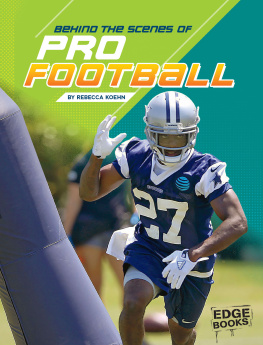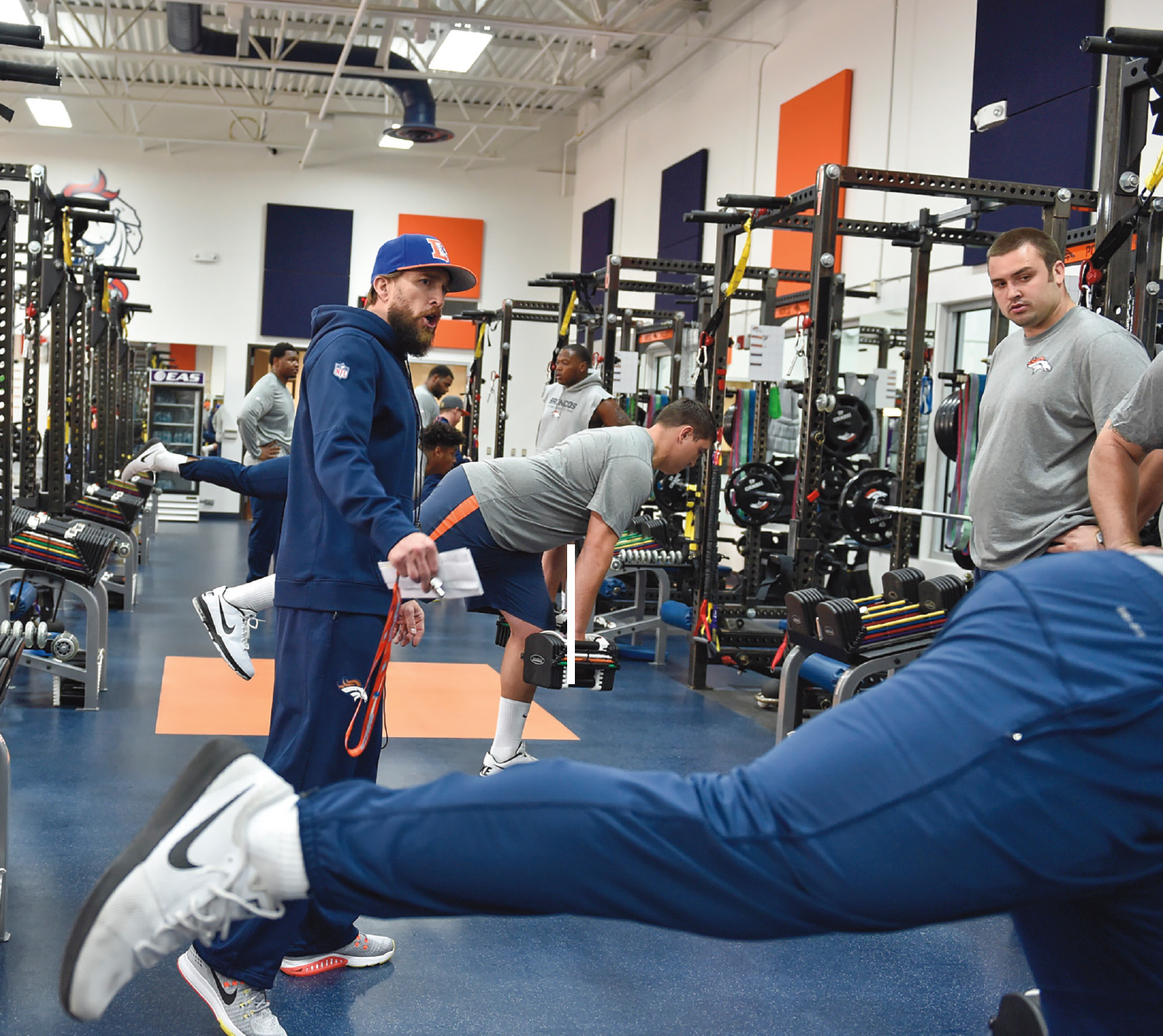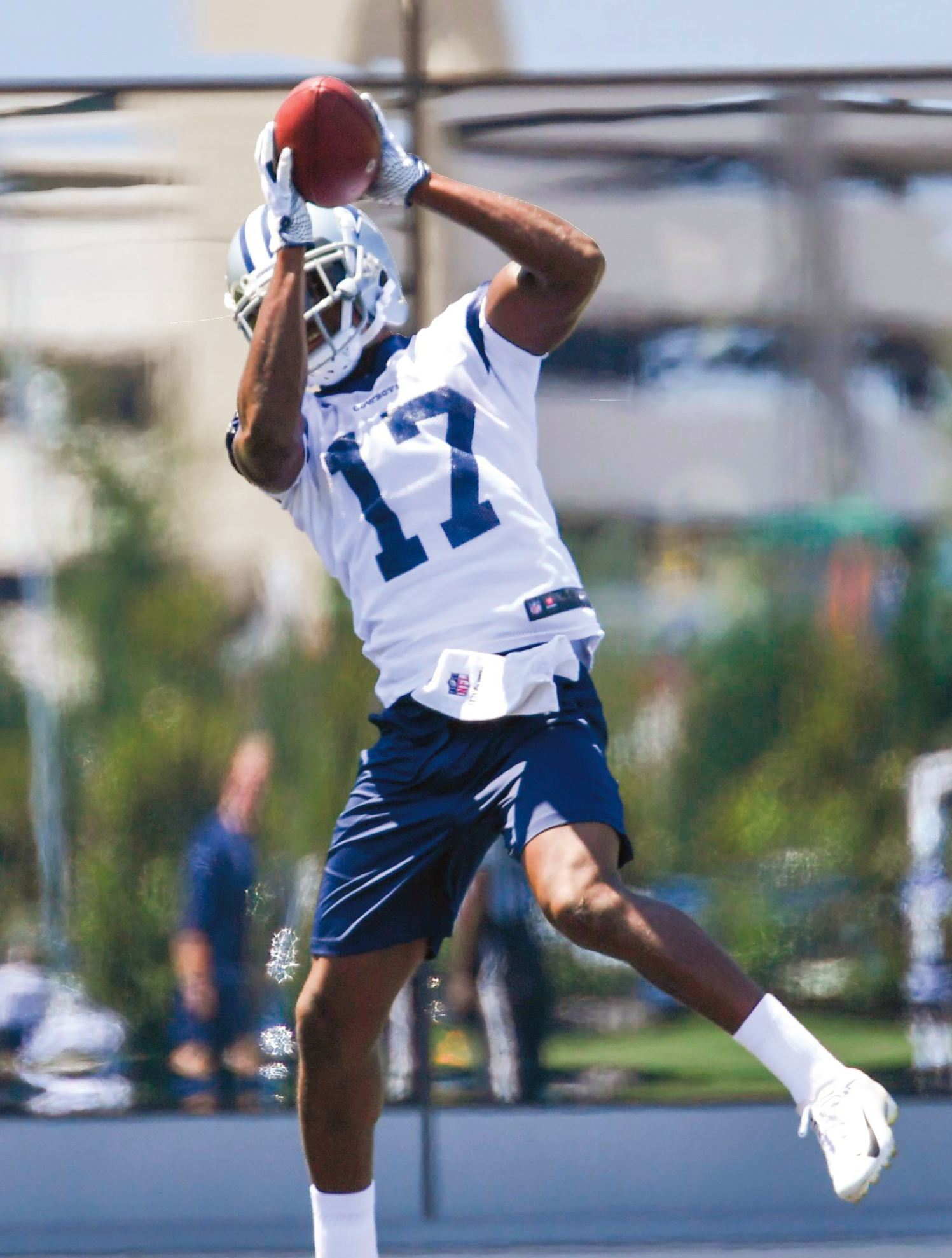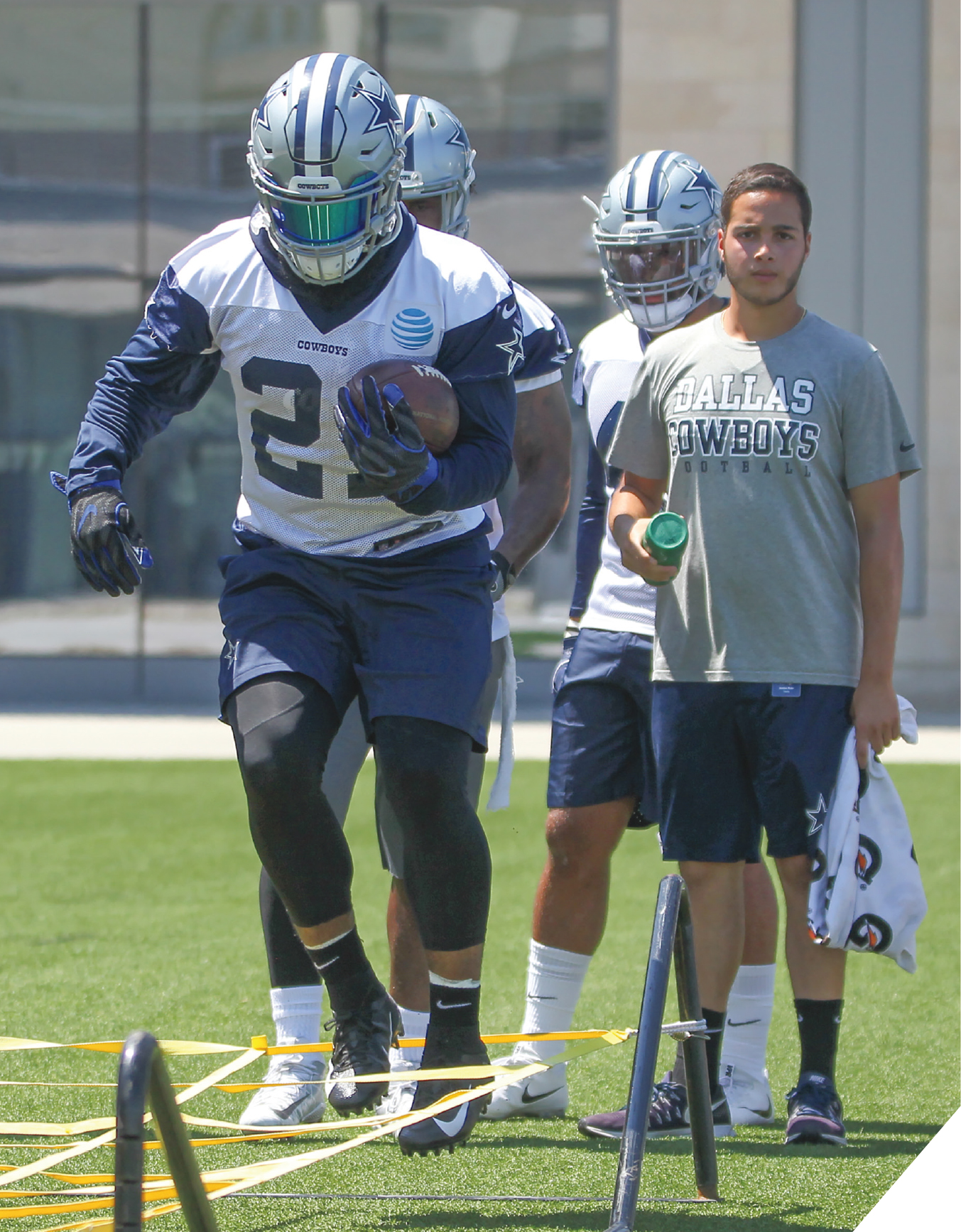Pros train to win. During the season players train to stay strong and healthy. Ithelps their bodies handle the stress and bumps of games. Players want to keep musclemass and maintain their weight to protect themselves from injury. Players also workto recover from the games quickly. During the season, players get one day off a week.All other days they are in the weight room, at meetings, watching game film, andpracticing.
Weight room work happens two or three times a week. Workout time is scheduled byposition. Linebackers and linemen lift at different times than skill position players,such as quarterbacks. Players dont lift the day before a game. Their bodies needto be rested and ready for game day. The day after a game, workouts are easier orskipped altogether. The schedule depends on injury and recovery needs.
FAST FACT
Players spend about 45 to 60 minutes in the weight room each day they work out during the season. This does not include practice time on the field.
Conditioning staff help players in the weight room.
If a player is injured, workouts are adjusted to help with recovery. Any injury fromminor to severe requires rehabilitation. Depending on the injury, trainers use stretchesto help the players range of motion. Heat pads help joint pain and increase bloodcirculation to an area.
OFF-SEASON TRAINING
Workouts and schedules change in the off-season. Players need their bodies to recoverfrom the physical stress of football season. However, they want to stay fit. Someplayers need to build muscle for the next season.
The NFL has rules about how often and when players can train, practice, and attendcamps in the off-season. All workouts and camps in the off-season are .
The off-season is broken into three training phases. Phase one is two weeks long.Workouts cant last longer than four hours per day. During this phase players onlywork with strength and conditioning coaches on the field.
Allen Hurns uses mini-camp to learn and improve before the season starts.
Phase two is also two weeks long. It has the same rules as phase one, except allcoaches are allowed on the field. They can begin working certain drills with playersin phase two.
Phase three lasts four weeks. Workout time is increased to six hours a day. Teamshold minicamps. A minicamp is a threeday camp that gives coaches a chance to evaluateplayers. No oneonone contact between players is allowed.
Dallas Cowboys running back Ezekiel Elliott does ladder drills to help with his footworkand agility.
FAST FACT
Green Bay Packers tight end Marcedes Lewis does mixed martial arts (MMA) in the off-seasonwith MMA fighter Chuck The Iceman Liddell to improve core strength and flexibility.
Throughout the off-season each player trains for his position. Linemen work out differentlythan kickers. Training is also adjusted if a player is recovering from surgery orinjury.
All players work on strength and . They use traditional exercises such assquats, bench presses, and deadlifts for strength. Exercises such as jump rope andladder drills are used for agility.
Some players like to mix it up in the off-season and try more interesting workouts.Russell Wilson of the Seattle Seahawks boxes in the off-season. He focuses on mobility.Drew Brees hits tires with sledgehammers to work his core muscles. Pittsburgh SteelerBrandon Cooks is one of many receivers who does Pilates, a form of exercise usingbody weight, to improve muscle control and quickness.
EATING FOR PERFORMANCE
Players in the NFL choose their food carefully so they will play better on the field.Eating right gives them the energy to push further. Some pros follow stricter dietsthan others, but most focus on eating what is best for peak performance. Thats oftenclean, protein-heavy foods. Eating clean means avoiding processed foods and .Most players dont eat fast food or packaged snacks. Protein helps a players musclesrebuild after hard workouts and long games.









![National Football League. - Men of Sunday: [how faith guides the players, coaches, and wives of the NFL]](/uploads/posts/book/165636/thumbs/national-football-league-men-of-sunday-how.jpg)








